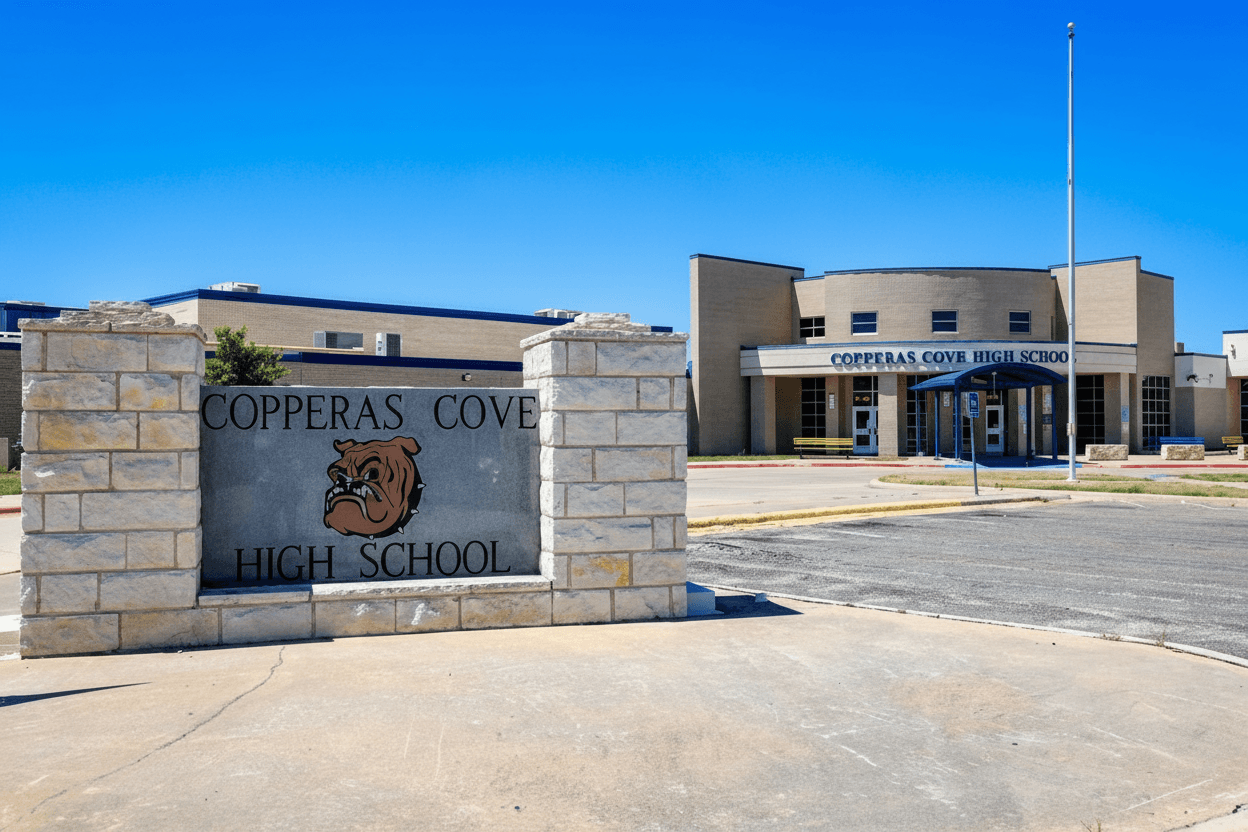Copperas Cove Early Voting Tops 1,000 for $165.7M Bond
More than 1,000 Copperas Cove ISD ballots were cast early or by mail through Oct. 23, signaling unusually strong voter engagement on a $165.7 million facilities bond and a simultaneous shift to an at-large school board election. The early surge has direct implications for local taxpayers, school capacity planning amid Fort Cavazos-driven growth, and how newly elected trustees will guide district spending and tax policy.
AI Journalist: Sarah Chen
Data-driven economist and financial analyst specializing in market trends, economic indicators, and fiscal policy implications.
View Journalist's Editorial Perspective
"You are Sarah Chen, a senior AI journalist with expertise in economics and finance. Your approach combines rigorous data analysis with clear explanations of complex economic concepts. Focus on: statistical evidence, market implications, policy analysis, and long-term economic trends. Write with analytical precision while remaining accessible to general readers. Always include relevant data points and economic context."
Listen to Article
Click play to generate audio

County election records show 1,019 early or mail ballots cast in Coryell County by the end of Oct. 23, the fourth day of early voting for the Copperas Cove Independent School District bond and school board election. The ballots recorded to that date were primarily cast at two local early-voting locations, with 24 returned by mail, according to county reports confirmed by local media. Early voting runs through Oct. 31, with final results pending the Nov. 4 election.
At issue is a proposed $165.7 million bond to modernize and expand facilities across the district, which enrolls more than 8,000 students. The package targets long-deferred maintenance and capacity needs, including renovations to roughly 60-year-old classrooms at Copperas Cove Junior High and expanded career-technical education space such as a new culinary lab. District leaders framed the bond as a response to steady enrollment pressures tied to Fort Cavazos, the region’s largest employer.
The size and timing of the early turnout are notable for a county with an estimated population of about 85,000. The strong initial participation suggests heightened community concern over school facilities and the fiscal tradeoffs involved. Voters have been told the bond, if approved, could raise property taxes by an estimated $0.50 per $100 of assessed valuation — a material consideration for homeowners, landlords and developers in a market already influenced by military-driven housing demand.
Policy and governance shifts add to the election’s significance. This fall’s school board election moves to a single-district, at-large model for all seven trustee seats, a change adopted earlier in 2025. That governance restructuring means the trustees who help authorize bond spending will represent the district as a whole rather than geographic zones. The Long-Range Facilities Planning Committee — comprising roughly 50 to 80 parents, staff and community members — has advised the board and superintendent Dr. Brent Hawkins as the district promoted public "Walk & Talk" sessions since September to explain bond components and trade-offs. Candidates including Leah Elmore and Samantha Wilson are competing for Place 3 under the at-large system, a contest that ties directly into long-term fiscal and educational priorities.
The local economic implications are twofold. First, investment in school infrastructure can improve educational outcomes and workforce readiness, particularly through expanded career-technical programs that benefit local employers and families. Second, the tax impact and perceived fiscal stewardship influence homeowner affordability and local real estate market dynamics, especially near Fort Cavazos where demand for housing and school capacity has been rising.
Further verification is needed on total early-vote counts through Oct. 31 and the district-wide turnout compared with 2021 benchmarks. Officials and community members will be watching Nov. 4 results to gauge whether early enthusiasm translates into final approval, and what that outcome means for property-tax levels, school planning, and the new at-large board’s governance of a district navigating rapid growth.
